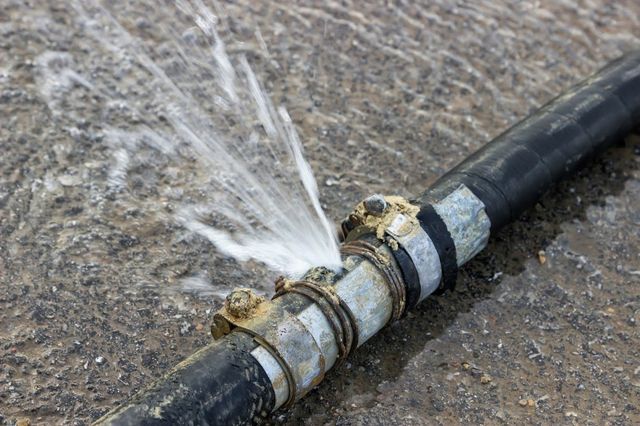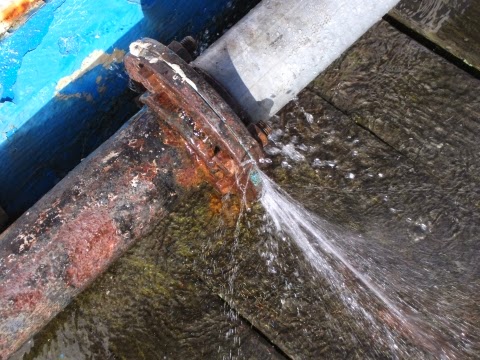Quick-Response Plumbing: Tips for Identifying and also Repairing Ruptured Pipes
Quick-Response Plumbing: Tips for Identifying and also Repairing Ruptured Pipes
Blog Article
What're your opinions about What to Know Before Installing a Dishwasher?

A burst pipe is a significant emergency; you can only stand as you enjoy water you pay dearly to reunite with the planet. In worse instances, you observe a swimming pool on your kitchen floor, which is a wonderful trip danger, specifically if you have children around. If the pipe that burst remained in your wall surfaces, bad news: you might need to repaint that whole area.
How can a calamity like a burst pipeline be protected against and handled? Well, by paying attention to your specialist emergency plumbers as well as adhering to these regulations.
Just how do I recognize when my pipelines have ruptured?
Rising and fall water stress
Pipelines do not simply burst in a day. You might have seen that your cooking area faucet or shower doesn't run promptly when you transform the faucet. It may stop briefly for a few seconds and then blast you with more force than usual.
In various other circumstances, the water might seem typical in the beginning, after that decrease in stress after a couple of seconds.
Wet wall surfaces and also water stains
Before a pipe bursts, it will leak, a lot of times. If this relentless dripping goes undetected, the leakage might finish right into a vast wound in your pipeline. One simple method to prevent this emergency is to keep an eye out for damp walls ad water spots. These water stains will lead you right to the leak.
Puddles under pipes and sinks
When a pipe bursts, the outflow creates a pool. It might show up that the pool is expanding in size, as well as regardless of the number of times you mop the puddle, in a few mins, there's one more one waiting to be cleaned up. Usually, you may not have the ability to trace the pool to any type of noticeable pipes. This is an indicator to call a professional plumber.
Untraceable leaking sounds
Pipe bursts can happen in the most undesirable areas, like within concrete, inside wall surfaces, or under sinks. When your home goes silent, you may have the ability to listen to an irritatingly relentless trickling sound. Even after you've inspected your shower head as well as kitchen faucet, the trickling may continue.
Beloved viewers, the leaking may be originating from a pipe inside your walls. There isn't much you can do concerning that, other than tell an expert plumber.
Shut down the Water
When water ices up, it expands in quantity by concerning 9 percent. As well as it expands with remarkable force: The pressure inside pipes might go from 40 pounds per square inch to 40,000 psi! No pipe can hold that much stress, so it breaks open. The break may occur where the ice kinds, yet more frequently, it occurs where water pressure finds a weak point in the pipe. That might be inches and even feet from the frozen location. Discover the water shutoff valve and switch off the water to prevent even more damage. You could also need to shut down the electrical power too, depending upon where the leakages happens and also exactly how big it is.
Infected water
Many people think a burst pipeline is a one-way outlet. Fairly the contrary. As water drains of the hole or gash in your plumbing system, impurities find their way in.
Your water might be polluted from the resource, so if you can, inspect if your water container has any type of troubles. Nevertheless, if your drinking water is supplied and also purified by the local government, you should call your plumber promptly if you see or smell anything funny in your water.
What do I do when I detect a burst pipeline?
Your water meter will continue to run also while your water wastes. To reduce your losses, locate the main controls as well as transform the supply off. The water mains are an above-ground framework beside your residential property.
How to Fix & Detect a Leaking Pipe
How Do I Know if a Pipe is Leaking?
Leak detection tests can help you determine if your pipe has a leak. Even if you don’t see an apparent leak, you should still conduct leak detection tests regularly to save water and money—and prevent major damage to your home.
Water meter. It can be helpful to figure out what your usual water meter usage numbers are and then monitor them regularly. To monitor your meter, first, turn off all water faucets in your home. Check the meter and write down the numbers. In a few hours, check the meter again. If the numbers have changed, you have a leak. Water gauge. Use a water gauge to test your water pressure. Your showerhead should produce a certain amount of water pressure based on its model and design. If the pressure is lower than it is supposed to be for that specific showerhead, your home likely has a leak. Puddles. Look inside your bathroom, laundry, and kitchen sink cabinets. Puddles around the cabinets or around toilets, tubs, showers, and washing machines indicate the presence of a leaking pipe. You may also notice loose tiles, peeling or flaking paint, or mold caused by water accumulation. Napkin test. Even if you don’t see any puddles, you may still have a leak. You can test for water leaks in the bathroom, laundry, and kitchen by wiping below-sink connections with a napkin, paper towel, or piece of toilet paper. If it becomes damp, you probably have a leaking pipe under the sink. Discolored walls. Walls that are discolored—usually with brown or yellow stains—or bulging might mean that they have been impacted by water damage caused by a leaking pipe. Smell. A leaky pipe will create sitting water, and over time, that water may develop a musty smell. If your home smells musty, but you can’t locate the source, it may be due to a leak. Steps for Fixing a Leaking Pipe
A leaky drain can be remedied by tightening the pipe base, replacing the drain seal, caulking the rim, and tightening the pipe nut. Similarly, a leaking toilet pipe can be treated by tightening the packing nut. You may also need to replace the valve. A leaky faucet may just need tightening or replacement of the washers. If that doesn’t work, consider replacing your faucet. If your pipe has a hole in it, you may want to use a pipe leak sealer or pipe leak tape. This quick fix for water pipe leaks can also temporarily fix a copper pipe leak. https://www.ahs.com/home-matters/quick-tips/how-to-tell-if-pipes-are-leaking/

As a reader about How to install a dishwasher safely, I assumed sharing that editorial was appropriate. Please set aside a second to distribute this article if you enjoyed it. I appreciate reading our article about How to Prepare for Your Dishwasher Installation.
Visit My Website
Report this page